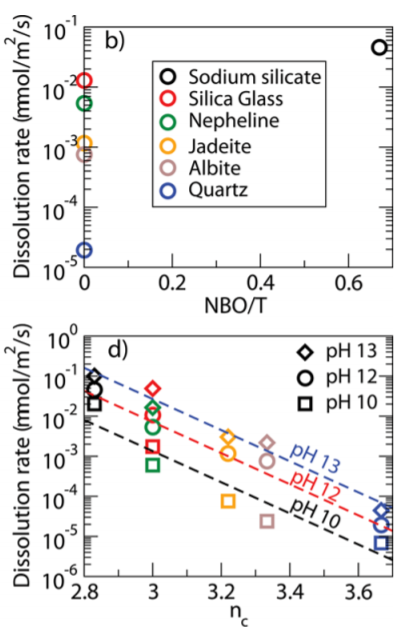Citation
Pignatelli, I.; Kumar, A.; Bauchy, M.; Sant, G. Langmuir, 2016, 32 (18), 4434–4439.
Pignatelli, I.; Kumar, A.; Bauchy, M.; Sant, G. Langmuir, 2016, 32 (18), 4434–4439.
Like many others, silicate solids dissolve when placed in contact with water. In a given aqueous environment, the dissolution rate depends on the composition and the structure of the solid and can span several orders of magnitude. Although the kinetics of dissolution depends on the complexities of both the dissolving solid and the solvent, a clear understanding of which structural descriptors of the solid control its dissolution rate is lacking. By pioneering dissolution experiments and atomistic simulations, we correlate the dissolution rates—ranging over 4 orders of magnitude—of a selection of silicate glasses and crystals to the number of chemical topological constraints acting between the atoms of the dissolving solid. The number of such constraints serves as an indicator of the effective activation energy, which arises from steric effects, and prevents the network from reorganizing locally to accommodate intermediate units forming over the course of the dissolution.
